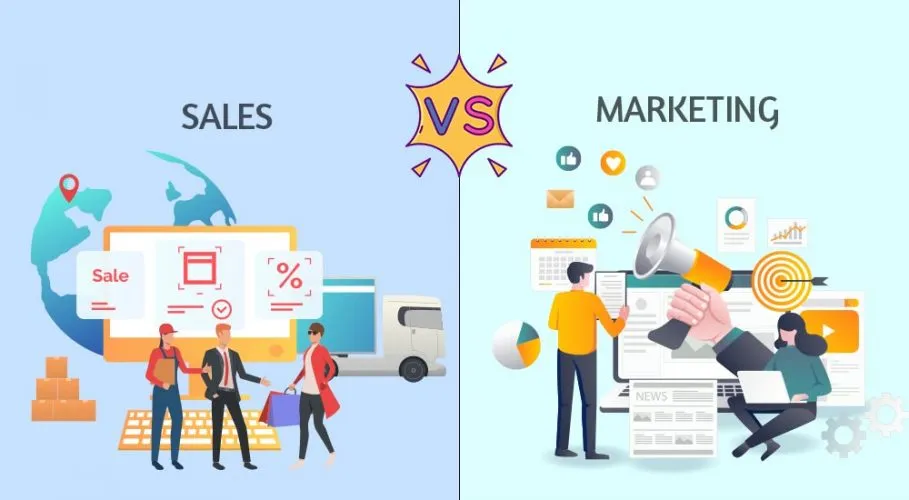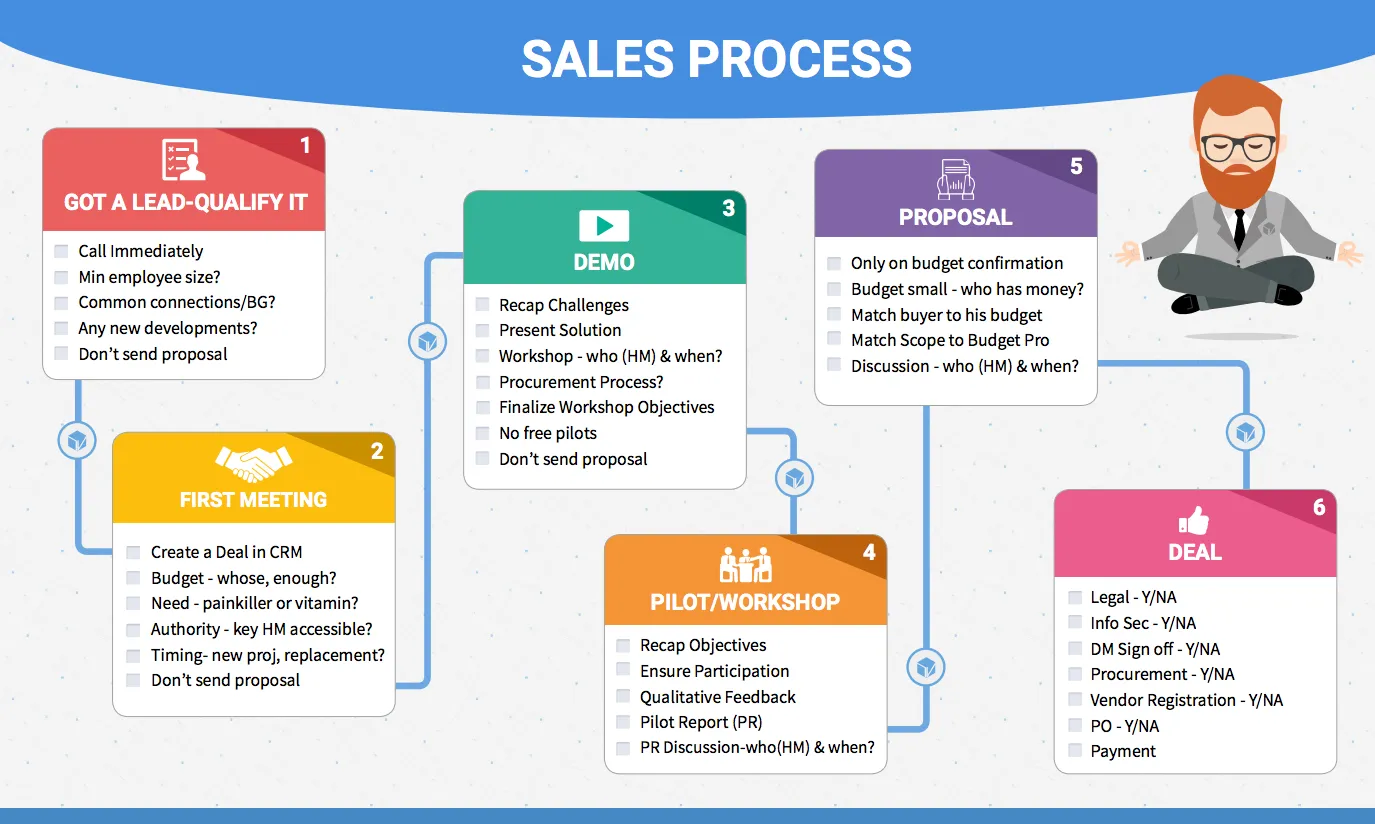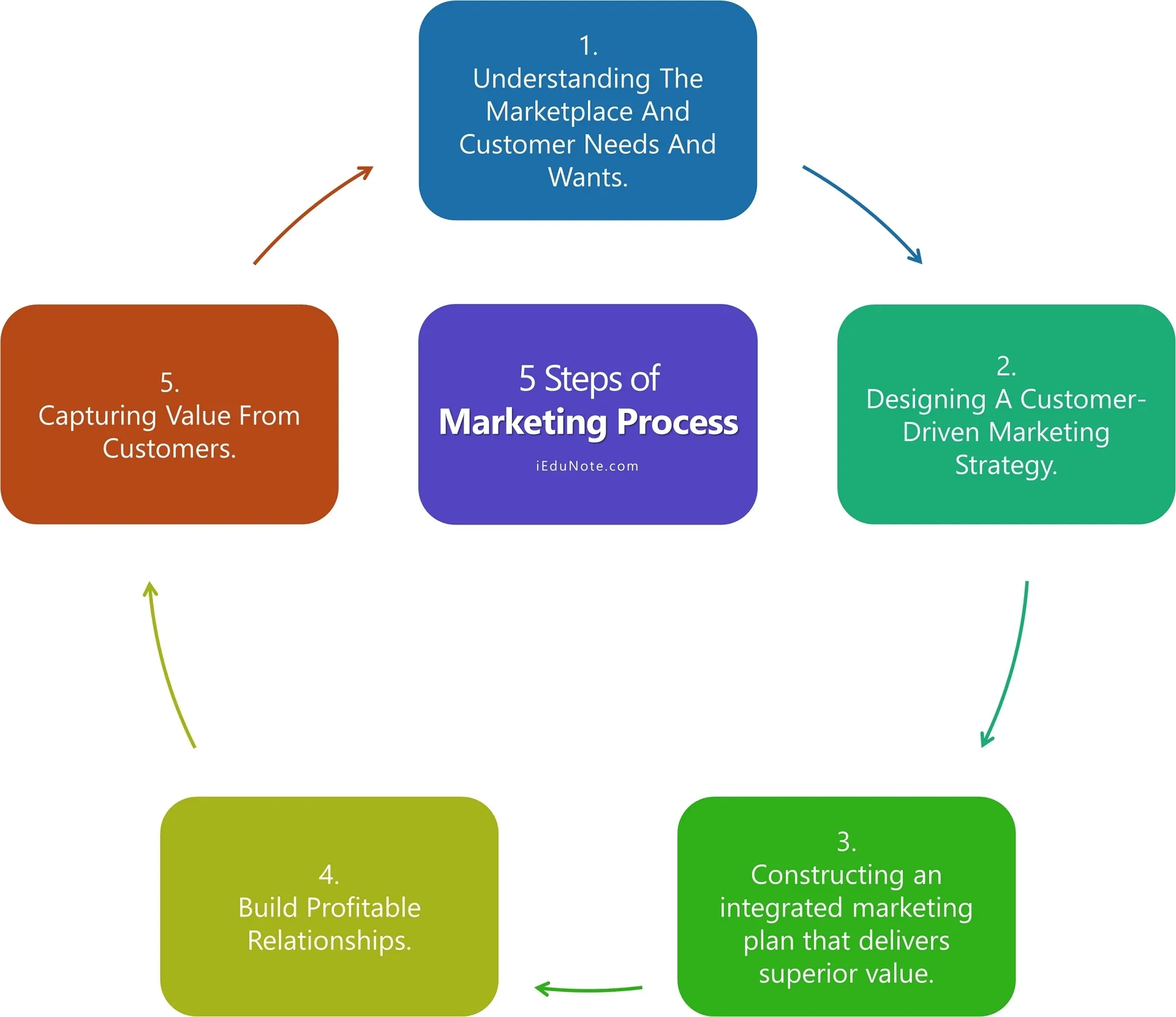What is Sales?

Sales involve strategies and processes that lead to the selling of goods or services. It focuses on converting potential customers into paying customers, often through direct interaction by sales teams or sales reps.
Key Components of Sales
Sales Teams and Sales Reps: These professionals are tasked with executing sales strategies to meet and exceed sales targets. They play a pivotal role in directly engaging with potential customers, understanding their needs, and guiding them through the sales cycle.
- Direct interaction with customers allows for personalized experiences, which can significantly increase conversion rates. For instance, companies with strong sales alignment have seen up to a 20% increase in annual revenue growth.
Sales Strategies and Sales Management: These are the frameworks and methodologies that guide the sales process, from lead generation to closing deals.
- A well-defined sales strategy, supported by effective sales management, ensures that the sales team's efforts are aligned with the company's business objectives. Companies that excel in sales management and strategy implementation often see higher efficiency and profitability.
Sales and Marketing Alignment: The synergy between sales and marketing departments is crucial for creating a seamless customer journey.
- Marketing generates awareness and leads through various campaigns and content marketing efforts. Sales then takes these leads, nurtures them, and converts them into sales. When aligned properly, marketing and sales can significantly shorten the sales cycle and improve the conversion rate.
- Businesses with strong sales and marketing alignment have seen up to 36% higher customer retention rates and 38% higher sales win rates.
Types of Sales: Inbound Sales vs Outbound Sales
Example of Sales Goals
- Increase Sales Volume: Aim to increase sales and marketing figures by 25% within the next fiscal year by enhancing sales team performance and aligning sales and marketing efforts more closely.
- Boost Revenue Growth: Target a 15% increase in revenue growth through up-selling and cross-selling strategies within existing customer segments.
- Expand Sales in New Markets: Open two new regional markets for the sales and marketing department in the coming year to widen the customer base and increase market share.
- Improve Sales Team Productivity: Enhance sales team efficiency by 20% by implementing sales enablement tools and regular training sessions.
- Enhance Sales Qualified Leads: Increase the number of sales qualified leads by 30% through better alignment of sales and marketing functions, focusing on lead generation strategies.
- Shorten Sales Cycle: Aim to reduce the sales cycle duration by 10% through improved sales processes and better sales and marketing alignment, facilitating quicker deal closures.
- Increase Customer Retention: Boost customer retention rates by 5% through enhanced customer relationships management and personalized sales strategies.
- Grow Key Account Sales: Achieve a 20% sales increase from key accounts by developing tailored sales strategies and closer sales and marketing collaboration on account-based marketing campaigns.
Impact of Sales on Business Success
Revenue Growth: The primary goal of sales activities is to generate income. By successfully converting leads into paying customers, businesses can ensure steady cash flow and invest in further growth and development.
- A study revealed that optimizing the sales process can lead to a 15% increase in revenue.
Customer Relationships: Sales is not just about closing a deal; it's about building and maintaining long-term relationships with customers.
- A strong relationship increases customer lifetime value and can lead to repeat business and referrals, which are less costly than acquiring new customers.
Market Research and Feedback Loop: Sales interactions provide valuable insights into customer needs and market trends, allowing businesses to adapt their offerings and strategies accordingly.
- Sales teams gather feedback during sales calls and meetings, which is then used to refine marketing strategies and product development efforts.
What is Marketing?

Marketing encompasses a wide range of activities aimed at promoting and selling products or services. It involves understanding the needs and preferences of potential customers and developing strategies to meet those needs through effective communication, product development, and distribution.
Key Components of Marketing
Market Research: The foundation for effective marketing strategies, providing insights into consumer behaviors, preferences, and trends.
- Companies that invest in market research can increase their profitability by tailoring their offerings to meet specific customer needs, potentially seeing a return on investment as high as 20% from these insights.
Marketing Strategies: Involves planning and executing a mix of product, price, place, and promotion to reach the target audience.
- A well-defined strategy helps businesses align their product development and promotional efforts with market demand, resulting in a 30% increase in consumer engagement on average.
Digital Marketing: Utilizes online channels, including social media, email, and SEO, to connect with customers.
- With over 60% of the world's population online, digital marketing strategies can increase a brand's visibility and engagement significantly, leading to an average increase in sales of 25%.
Types of Marketing: Inbound Marketing vs Outbound Marketing
Example of Marketing Goals
- Enhance Brand Awareness: Increase brand awareness by 30% in target markets through strategic marketing campaigns and digital marketing efforts.
- Improve Engagement on Social Media: Boost social media engagement by 50% through consistent, high-quality content marketing and social media marketing strategies.
- Increase Website Traffic: Drive a 40% increase in traffic to the company website utilizing SEO strategies and engaging marketing content.
- Grow Email Marketing List: Expand the email marketing list by 25% through digital marketing efforts and lead generation campaigns that encourage newsletter sign-ups.
- Boost Conversion Rates: Improve overall marketing campaign conversion rates by 10% through optimized marketing strategies and targeted content marketing.
- Enhance Customer Loyalty: Strengthen customer loyalty and engagement by implementing a customer engagement platforms strategy, aiming for a 15% improvement in customer retention metrics.
- Expand Market Reach: Enter two new demographic markets within the next year through targeted marketing strategies and market research analysis.
- Increase Marketing ROI: Achieve a 20% increase in marketing ROI by refining marketing strategies, focusing on high-performing channels, and leveraging marketing automation tools.
Impact of Marketing on Business Success
Brand Recognition: Effective marketing campaigns increase brand awareness and establish a strong market presence.
- Example: Companies with high brand recognition see a 5-7x increase in customer conversion rates.
Customer Loyalty: Through continuous engagement and delivering on promises, marketing nurtures customer relationships, enhancing loyalty.
- Long-Term Benefit: Loyal customers spend 67% more than new ones, highlighting the importance of retention strategies in marketing.
Market Expansion: Marketing efforts help businesses identify and enter new markets, driving growth.
- Growth Potential: Companies that successfully penetrate new markets can expect a revenue increase of 20% on average within the first year.
Innovation Feedback Loop: Customer feedback gathered through marketing activities informs product development, ensuring offerings meet evolving market needs.
- Innovation Impact: Businesses that adapt based on customer feedback report a 40% higher innovation success rate.
Key Difference Between Sales and Marketing

Key Difference Between Sales and Marketing Teams

The key differences between sales and marketing teams are foundational to how businesses operate, strategize, and succeed. While both functions are crucial to a company's success, they focus on different stages of the customer journey and have distinct objectives, strategies, and metrics.
Primary Focus and Objectives
Sales Teams:
- Focus on converting leads into paying customers, directly impacting the company's revenue.
- Objectives include meeting or exceeding sales targets, expanding the customer base, and increasing customer lifetime value.
- For instance, a sales team might have a quarterly target to increase sales by 15%, directly contributing to the company's bottom line.
Marketing Teams:
- Aim to build brand awareness, generate leads, and establish a market presence.
- Their goals involve creating a strong brand identity, developing engaging content, and attracting potential customers to the brand.
- A marketing team's success might be measured by a 25% increase in website traffic or a 30% rise in lead generation over a quarter.
Strategies and Tactics
Sales Teams:
- Employ direct communication and relationship-building strategies with potential and existing customers.
- Tactics include personalized emails, phone calls, and face-to-face meetings to understand and solve customer problems.
- The sales process might be enhanced by using CRM software to track interactions and follow-ups, increasing conversion rates by up to 30%.
Marketing Teams:
- Utilize broad communication strategies such as social media marketing, content marketing, SEO, and advertising campaigns.
- They segment the market and target specific customer profiles with tailored messages.
- Effective content marketing strategies can lead to a 55% increase in website visitors and a significant boost in brand engagement.
Engagement with Customers
Sales Teams:
- Engage in direct, one-on-one conversations to persuade and close sales.
- The engagement is highly personalized, focusing on the needs and concerns of individual customers.
Marketing Teams:
- Create and distribute content to engage a broader audience, often at the top of the sales funnel.
- Engagement is about creating interest and awareness, nurturing leads until they are ready to consider a purchase.
Success Metrics
Sales Teams:
- Measure success through sales volume, revenue, conversion rates, and customer acquisition costs.
- A key metric might be the sales conversion rate, which reflects the efficiency of sales strategies and customer interactions.
Marketing Teams:
- Use lead generation, brand visibility, and engagement metrics like social media interactions, website traffic, and content reach.
- For example, a successful campaign might be measured by a 40% increase in leads generated through an online marketing campaign.
Tools and Technologies
Sales Teams:
- Rely on CRM systems to manage customer relationships and sales processes.
- Sales enablement tools are used for presentations, proposals, and communication.
Marketing Teams:
- Utilize marketing automation platforms, SEO tools, and data analytics software to optimize campaigns and understand audience behavior.
- Digital marketing tools help in targeting, segmentation, and analysis of marketing efforts.
What is Sales and Marketing Alignment
Sales and marketing alignment is the strategic coordination between the sales and marketing departments to ensure that both teams are working towards common goals, effectively communicating, and supporting each other to drive overall business growth.
This alignment is crucial for optimizing the customer journey, from awareness through to purchase, ensuring that potential customers receive consistent messaging and engagement at every touchpoint.
Key Aspects of Sales and Marketing Alignment
Unified Goals
Both teams work towards shared objectives, such as revenue targets, lead generation quotas, and customer satisfaction metrics.
Companies with strong alignment see up to a 20% annual growth rate compared to a 4% decline in companies with poor alignment.
Open Communication
Regular meetings and shared platforms for communication help in aligning strategies and addressing any issues promptly.
Integrated Tools and Processes
Using shared CRM systems and marketing automation tools allows for seamless tracking of leads and customer interactions.
Businesses that successfully integrate their sales and marketing technologies can experience a 36% higher customer retention rate.
Mutual Respect and Understanding
A culture that promotes mutual respect and understanding of each team's role in the sales process is essential for effective collaboration.
Sales and Marketing Misalignment Happens When
Lack of Shared Objectives
Each team operates with its own set of goals, metrics, and definitions of success, leading to disjointed efforts.
Misalignment can result in marketing generating leads that sales do not follow up on, attributing to a waste of resources.
Poor Communication
Infrequent or ineffective communication between the teams leads to misunderstandings, missed opportunities, and duplicated efforts.
A survey found that 1 in 3 marketers does not know what content sales teams need for their operations.
Inconsistent Messaging
When sales and marketing messages are not aligned, it confuses potential customers and dilutes the brand's value proposition.
Consistent brand presentation across all platforms can increase revenue by up to 23%.
Technology Silos
Using different tools that are not integrated can hinder the flow of information between teams, affecting lead management and customer insights.
Integrating CRM and marketing automation platforms can lead to a 14.5% increase in sales productivity.
Strategies for Achieving Alignment
Achieving sales and marketing alignment involves strategic actions and a commitment from both teams to work towards shared objectives. This alignment enhances efficiency, improves the customer journey, and drives business growth. Here are strategies to ensure effective sales and marketing alignment:
1. Establish Common Goals and Metrics:
- Set shared revenue targets, lead quality standards, and customer retention rates to unify efforts.
- Implement a Service Level Agreement (SLA) between sales and marketing to define expectations, responsibilities, and metrics for success.
2. Foster Open Communication:
- Schedule regular meetings for sales and marketing teams to discuss strategies, share insights, and update on progress.
- Create cross-team groups or channels on communication platforms to facilitate daily interactions and quick resolution of issues.
3. Integrate Sales and Marketing Tools:
- Use a unified CRM system to track leads, customer interactions, and sales funnel progress accessible to both sales and marketing.
- Leverage marketing automation tools to nurture leads efficiently and provide sales with timely, actionable insights on lead behavior.
4. Align Content and Messaging:
- Develop buyer personas collaboratively to ensure both teams target the same audience with consistent messaging.
- Marketing should create content that supports the sales process, including case studies, product demos, and FAQ sheets, based on sales feedback about customer needs and objections.
5. Implement Joint Campaign Planning:
- Co-plan marketing campaigns and sales strategies to ensure alignment from the outset. Marketing campaigns should generate leads that align with the sales team's target market and objectives.
- Review past campaigns together to identify what worked, what didn’t, and how to improve future efforts.
6. Conduct Regular Training and Knowledge Sharing:
- Organize cross-training sessions where sales and marketing can share their processes, challenges, and best practices.
- Marketing can educate sales on the brand messaging and upcoming campaigns, while sales can provide feedback from the field to refine marketing strategies.
7. Celebrate Unified Successes:
- Recognize and celebrate achievements that result from collaborative efforts to encourage teamwork and maintain alignment.
- Create incentive programs that reward both sales and marketing teams for achieving joint goals.
Impact of Alignment:
- According to studies, businesses with strong sales and marketing alignment achieve 20% annual revenue growth.
- Aligned companies enjoy 36% higher customer retention rates and 38% higher sales win rates.
Understanding the Sales and Marketing Process
Understanding the sales and marketing process is crucial for any business aiming to drive growth and maintain competitiveness in the market. While intertwined, each process has distinct phases and strategies that, when executed cohesively, create a seamless customer journey from awareness to purchase and beyond.
Sales Team Process

The sales process is a direct, customer-facing operation focused on converting leads into paying customers. It's a sequence of stages designed to understand and meet the needs of prospects with the ultimate goal of closing deals.
Prospecting: The initial stage involves identifying potential customers (leads) who may benefit from the company's products or services.
- High-quality leads increase the efficiency of the sales process, reducing time and resources spent on unqualified prospects.
Qualifying Leads: Sales teams assess the leads to determine their potential to become customers based on criteria like need, budget, and purchase authority.
- Proper lead qualification can increase conversion rates by up to 50% by focusing efforts on high-potential prospects.
Presentation: This involves engaging with the qualified leads to discuss their challenges and how the product or service can address those needs.
Handling Objections: Sales representatives address any concerns or objections that prospects may have, demonstrating value and removing barriers to the sale.
- Effective objection handling increases deal closure rates by presenting tailored solutions that resonate with prospect needs.
Closing: The final step where sales reps secure the deal, involving negotiation, agreement on terms, and finalizing the sale.
- Closing techniques vary, but creating a sense of urgency can lead to a 10% increase in closure rates.
Marketing Team Process

The marketing process aims to attract, engage, and nurture leads at the top of the sales funnel, creating a steady flow of qualified leads for the sales team.
It encompasses a broad range of activities designed to build brand awareness and establish trust and authority in the market.
Market Research: Understanding the market, competition, and customer needs to inform all marketing strategies.
- 80% of successful product launches are backed by in-depth market research, highlighting its importance in meeting customer needs.
Brand Strategy: Developing a strong brand identity and message that resonates with the target audience.
- A consistent brand strategy can increase revenue by up to 23% by enhancing customer recognition and loyalty.
Content Marketing: Creating valuable content to attract and engage the target audience, establishing the brand as a thought leader.
- Content marketing generates three times as many leads as traditional outbound marketing, but costs 62% less.
Digital Marketing: Utilizing online channels (SEO, social media, email marketing) to reach and engage with prospects.
- Digital marketing efforts can result in a 2.8x higher revenue growth expectancy for businesses.
Lead Generation and Nurturing: Capturing interest through campaigns and nurturing leads with targeted content until they are ready to buy.
- Businesses that excel in lead nurturing generate 50% more sales-ready leads at a 33% lower cost.
Integrating Sales and Marketing
For optimal performance, it’s essential that sales and marketing processes are aligned. This alignment ensures that marketing efforts feed directly into the sales pipeline, improving the efficiency and effectiveness of both teams.
Collaboration, shared goals, and open communication are key to synchronizing these processes, leading to higher conversion rates, increased customer satisfaction, and improved ROI.
Best Sales and Marketing Strategies
1. Personalization at Scale:
- Tailor interactions based on customer data to provide personalized experiences.
- Personalized emails deliver 6x higher transaction rates.
2. Solution Selling:
- Focus on the customer's pain points and present your product or service as the solution.
- 70% of buying experiences are based on how the customer feels they are being understood.
3. Leveraging Social Selling:
- Use social media platforms to connect with and understand potential customers.
- 78% of salespeople engaged in social selling are outselling their peers who aren’t.
4. Referral Programs:
- Encourage satisfied customers to refer new business.
- Referral leads convert 30% better than leads generated from other marketing channels.
5. Content Marketing:
- Create valuable and relevant content targeted at your ideal customer.
- Content marketing costs 62% less than traditional marketing and generates about 3 times as many leads.
6. SEO and Inbound Marketing:
- Optimize content to rank higher in search engine results, making it easier for potential customers to find you.
- SEO leads have a 14.6% close rate, compared to 1.7% for outbound leads.
7. Multi-Channel Marketing:
- Engage customers across various platforms (email, social media, blogs) to increase touchpoints.
- Customers who use 3 or more channels to engage with brands have a purchase frequency that is 250% higher than single-channel users.
8. Data-Driven Marketing:
- Utilize customer data and analytics to guide marketing strategies and decisions.
- Businesses that adopt data-driven marketing are more likely to have an advantage over the competition and increase profitability.
Best Practices for Marketing and Sales Teams
1. Integration and Alignment
- Align goals and strategies between sales and marketing for a cohesive approach.
- Companies with strong sales and marketing alignment achieve 20% annual growth.
2. Continuous Learning and Adaptation:
- Stay informed about market trends and adapt strategies accordingly.
- Invest in ongoing training for both sales and marketing teams to keep skills sharp.
3. Customer-Centric Approach:
- Place the customer's needs and experience at the center of all strategies.
- Develop buyer personas and customer journey maps to better understand and meet customer needs.
4. Leverage Technology:
- Implement CRM and marketing automation tools to streamline processes and provide better insights.
- Sales teams that use CRM can improve their productivity by up to 34%.
5. Feedback Loops and Analytics:
- Regularly review performance data to identify areas for improvement.
- Encourage feedback between sales and marketing to refine tactics and strategies.
Concluding Thoughts
Understanding the difference and ensuring alignment between the sales and marketing team is crucial for any successful business. While both sales and marketing professionals play distinct roles, their collaboration is key to driving growth and enhancing customer experiences.
For businesses to thrive, integrating strategies and goals of both teams ensures that efforts are not duplicated but instead contribute to a cohesive approach towards achieving company objectives.
By working together, the sales and marketing team can streamline processes, improve communication, and effectively meet the needs of their customers, leading to increased sales and stronger brand loyalty.
Future Reading:
Explore more insights and deepen your understanding of sales and marketing dynamics with these recommended reads:
- The Evolution of Sales Techniques: Gain insights into the transformative journey of sales strategies and what it means for modern sales professionals. Read More
- Building a Successful Sales Team: Discover effective strategies for assembling and nurturing a sales force capable of seamlessly collaborating with marketing to drive growth. Read More
- Measuring ROI in Sales and Marketing: Delve into the crucial metrics and KPIs essential for evaluating the impact and effectiveness of your sales and marketing strategies. Read More
Improve your strategies and foster a productive dialogue between your sales and marketing teams with these additional resources. Happy reading!





.jpg)

.jpg)
